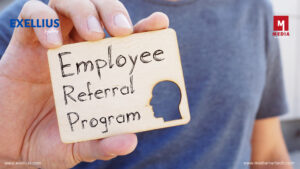
Estimated reading time: 3 minutes
Mr. Bartender and I recently took a little road trip which involved an overnight stay in a hotel. One of the great things about today’s travel environment is that you can pre- check-in and tell the hotel when you plan to arrive. They can also tell you in advance if they cannot honor a request for early check-in. All happens via an app. Easy peasy. Right?
While we didn’t ask for an early check-in, you can probably see where this is going. When we arrived around 4p to check-in, we were told our hotel room wasn’t ready. And the hotel has no idea when it will be ready. Ultimately, it took the hotel two hours after we arrived to have our room ready.
This seems odd to me. Hotels have 4p check-in times for a reason. It gives them all day to get rooms ready. This is not hotel industry insider information. It’s simply logic. We can guess what happened here. This hotel has a staffing challenge and for whatever the reason, they fell behind getting rooms ready.
Today’s article isn’t about the trip or the hotel or checking in much later than anticipated. It’s also not about being short staffed. The part that surprised me about this situation is that chances are good that the hotel knew for several hours that they had a problem. Which means they had several hours to proactively problem solve and find some solutions.
I have a favorite problem-solving model called STP (Situation – Target – Proposal).
SITUATION allows us to examine what is taking place. What’s the situation we’re faced with? In my story, it’s that the hotel can’t get rooms ready in time for their guests checking in at 4p.
TARGET refers to our goal. And it’s important to remember that our ideal goal might not be achievable right now. We might have to consider a Plan B goal. For example, in our hotel story, the ideal goal is to have all the rooms ready at 4p. But given the situation, maybe the goal becomes 5p or 6p. Not ideal, but it’s the new goal.
PROPOSAL is the path we will take to accomplish the target goal. We might have to think differently, especially if the target isn’t what we usually do. If our new goal is a 6p check-in, then we must put together a new plan to accomplish the goal.
My point is that organizations can proactively do some problem solving. They don’t have to wait until customers are surprised and/or frustrated.
The same concept applies to workplace issues and employees. If companies know that they are going to be faced with a challenge – like a short staffing situation or delivering some bad news – then proactive problem solving might help.
And let’s take this one final step. Employees can use this as well. If an employee knows they will be facing a challenge – maybe with their work schedule or delivering a project on time – it could make some sense to do some proactive problem solving.
How many times have you been on the receiving end of a situation and said to yourself, “This problem didn’t happen five minutes ago. They’ve known for a while and just got around to telling us.”? Time to employ some proactive problem-solving techniques to deal with the situation better.
Image captured by Sharlyn Lauby while exploring the streets of Washington, DC
The post Problem Solving Can Be a Proactive Exercise appeared first on hr bartender.








